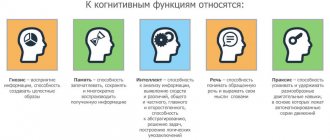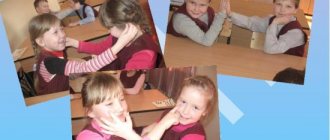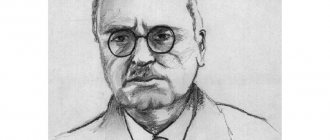Doctors Cost
Price list Doctors clinic
Neurosis (neurotic reactions) in children is a collective concept that includes several neuropsychic disorders. The disease occurs in response to a conflict situation and is manifested by increased mental exhaustion, emotional disturbances, and disruption of the autonomic nervous system. Among all neuropsychiatric diseases, the share of neuroses is about 45%. Boys of senior preschool and primary school age get sick more often. All symptoms are reversible and with the right approach you can completely get rid of the pathology.
General information
The concept of “neuroses” includes various disorders of the central and autonomic nervous system that arise under the influence of acute or chronic stress. Higher centers of nervous activity regulate all functions: breathing, heartbeat, digestion, emotions, excretory and sexual activity. Accordingly, violations can occur in all systems.
The clinical picture of neuroses in children and adolescents is varied and includes emotional and physical disorders. The diagnosis is established after excluding similar diseases of the internal organs and examining the structure and functions of the nervous system.
Neurosis differs from an organic (irreversible) disease in the absence of a morphological substrate for the disease. That is, during a laboratory or instrumental examination, no changes are detected, but clinical manifestations (pain, discomfort) occur. The prevalence of neuroses is very high, reaching 25% of all diseases.
This is how children suffering from neuroses feel:
- Alina, 15 years old (social phobia):
“Going to school is torture for me. In class, I feel so tense that my hands are shaking and my neck is going numb. I'm afraid that they'll ask me and the whole class will see that I'm some kind of strange, mentally ill person. I'm afraid that my head will start to shake from tension, that I will lose control of myself. I also blush, sweat, I have to dodge all the time so that no one notices my red, wet hands. I hate myself in such states! When I come home from school, I cry all the time.” - Marina, 14 years old (panic attacks):
“I’m afraid to ride the subway, I’m afraid to sit in class, I’m afraid of situations that are difficult to get out of immediately. My heart starts beating fast, my hands go numb, I’m out of breath. I am afraid that something will happen to me, that I will fall, lose consciousness, and also look strange. I'm afraid of losing control of myself." - Pavel, 14 years old (obsessive-compulsive disorder, OCD):
“I hate my life, I hate doing homework. I'm afraid that I'll miss something important while doing homework or going about my day, so I have to repeat information over and over again in my head until I feel like I've got it all figured out. It takes a lot of time, I get tired of it and annoyed with myself. When I open a textbook, I have to be sure that I haven't wrinkled the page, otherwise I'll have to iron it a few times afterward. Sometimes I don’t notice how I’m tearing out my hair with all this. And that's not it…". - Larisa, 13 years old (social phobia):
“I’m ashamed, and I don’t know what can help me. I am afraid of situations from which there is no quick way out. In class, on public transport, I start to want to go to the toilet, I’m afraid that I won’t be able to stand it, I’ll lose control and everything will happen to me in front of everyone. I'm tense all the time, I sweat from tension, it's uncomfortable for me to walk with circles under my arms. I put napkins there so that they are not noticeable. I sit in class and count down the minutes. The closer you get to the end, the easier it gets. I go to the toilet many times before school to hope that I won't feel like it at school, but it doesn't help. My parents, seeing this, get annoyed with me. I feel abnormal. I can’t tell anyone about this.”
Prerequisites for the emergence of psycho-emotional stress and the formation of neuroses in adolescents in modern society:
- Adolescence is characterized by powerful hormonal changes, which in the psychological sphere manifest themselves in the form of increased anxiety, irritability or a tendency to a sad mood, and in the physical sphere - symptoms of vegetative-vascular dystonia (VSD).
- During adolescence, a set of personal values and goals is formed that are intended to become a support in future life. But, unfortunately, in modern society the formation of personality is forced to occur in conditions of contradiction, duality and inconsistency of the presented value ideology. A humorous example of this: “Of course you should have your own opinion, and now I’ll tell you it!” This leads to internal and external conflicts and, accordingly, to emotional disorders and often to symptoms of VSD.
- Modern society is characterized by a high level of intolerance. There is a large percentage of people with anxiety, irritability, depression due to imbalance, unsettled life or untreated emotional illnesses, which leads to a state of intolerance. Adolescents, accordingly, are easily rewarded by adults with derogatory definitions, which contributes to the emergence of interpersonal conflicts and the formation of vulnerable self-esteem in children. In addition, in such an atmosphere, looking at dissatisfied and anxious adults, teenagers read the underlying information that the world is dangerous. And again the result is emotional disorders and symptoms of VSD.
- Children are spending more and more time on gadgets, walking and socializing less. This, on the one hand, is a prerequisite for VSD (emotions are not realized in sufficient motor activity, an imbalance of the autonomic nervous system occurs), and on the other hand, it leads to insufficient communication practice, as a result of which ordinary communication with peers in real life begins to cause anxiety.
Three common ways of developing neuroses in adolescents against the background of psycho-emotional stress and symptoms of VSD:
- Psycho-emotional stress can manifest itself as symptoms of VSD - muscle tension, trembling in the body, dizziness, a lump in the throat, shortness of breath, sweating, frequent bowel movements, the urge to urinate and other symptoms. If against this background the child begins to fear for his health, then he will develop PANIC ATTACKS or HYPOCHONDRIC NEUROSIS. If a child begins to worry about how he looks, he will develop SOCIOPHOBIA.
- Living in conditions of chronic interpersonal or intrapersonal conflicts, for which adolescents have no solution, can lead to the fact that the psyche will find a way to calm down by performing actions that are understandable to it. This is called displaced activity: in a hopeless situation, a person may begin to perform an action that is understandable to him, but not related to the current situation. This is how obsessions and various rituals are formed, that is, OBSESSIVE-COMPULSIVE DISORDER or OCD.
- Exhaustion of the nervous system against the background of psycho-emotional stress is manifested by symptoms of VSD and irritable weakness, fatigue, headaches, and sleep disturbances. There is increased sensitivity to bright light and loud sounds. This is how NEURASTENIC NEUROSIS is formed.
- Influence the prerequisites for the formation of neurosis. It is important that the hygiene of the child’s life is maintained: that after stress the child has the opportunity to recover, that he sleeps and eats enough, that there is enough physical activity, that the time spent on gadgets is limited. It is important that a child grows up in a peaceful environment, at least in a family. It is important to be consistent in offering and demonstrating good values and to be tolerant. There is no escape, but it will be very helpful for parents to balance their lives and resolve their issues so that they can be happy with their lives. We hope that your child's health can be a worthy motivation to set aside time and other resources for yourself to resolve issues of your own mood.
- Contact a specialist to solve the neurosis that has arisen in the child. Here you can get help in the form of individual consultations, and we have also developed a group program especially for teenagers. This is how they speak about the help received at our center.
- Learn to live an active life correctly.
How to help a teenager?
In addition to neuroses, other disorders of the neurotic level can be observed in adolescence: other emotional disorders and adaptation disorders and decompensation of personal characteristics in the form of various psychopathic behavior.
Symptoms of neuroses in children
The symptoms of childhood neuroses are intertwined and have some differences from the manifestations in adults. The most common signs are:
- increased excitability;
- fast fatiguability;
- persistent, persistent headaches of moderate strength;
- sleep disorders;
- anxiety or restlessness;
- periodic attacks of palpitations, sometimes with shortness of breath;
- tearfulness;
- causeless change of mood;
- tendency to constipation;
- tearfulness;
- deterioration in school performance;
- headache (sensation of a “hoop”) and other disorders that do not fit into the usual clinical picture of a particular disease.
Most often parents encounter the following symptoms:
- fears;
- hysterics;
- stuttering;
- sleep disorder;
- nocturnal enuresis (urinary incontinence).
The combination of signs of neurosis in children largely depends on its type.
Asthenic neurosis (neurasthenia)
It occurs more often in timid children; the provoking factor is stress or neuropsychic fatigue. Symptoms of anxiety come to the fore: fears, sleep disorders. Often there is increased sensitivity to noise or bright light. An exacerbation is accompanied by pain in the head or heart area, nausea and vomiting, intestinal disorders, and sweating.
Hysterical neurosis
The pathology is typical for children with demonstrative behavior who like to play in public. A classic sign of the disorder is hysterics, accompanied by loud, demonstrative screams, falls, etc. In infants and preschoolers, physiological symptoms come to the fore: rolling up when crying, urinary or fecal incontinence. In children who already know how to speak, mutism occurs - the cessation of speech in certain situations.
Obsessive-compulsive disorder
Occurs in overly responsible children who have a tendency to be pedantic and adhere to principles. The pathology is characterized by the emergence of pronounced phobias, which provoke obsessive movements, as well as various rituals that help to calm down a little.
Depressive neurosis
The child develops obvious signs of depression and apathy: lack of emotions, poor facial expressions, depressed mood, desire to be alone. Appetite decreases and sleep disturbances occur. As a rule, the provoking factor is a dysfunctional, traumatic situation in the family.
Systemic neuroses
Each of the disorders in this group is characterized by the occurrence of one, or less often two, symptoms. Such conditions include isolated tics (twitching of individual muscles), enuresis, encopresis, stuttering, etc.
In what cases should you consult a doctor?
You should contact a neurologist immediately as soon as you suspect that your baby’s behavior does not fit into generally accepted norms, and you don’t know how to behave correctly with him.
Neuroses in children. Symptoms:
- whims for no apparent reason;
- tears for any, even minor, reason;
- frequent tantrums for no apparent reason;
- excessive sensitivity to weather changes;
- dislike of new clothes, irritation from tags and seams;
- intolerance to crowds of people;
- frequent fears: afraid of the dark, a closed closet, the dark under the stairs - anything;
- restlessness, need for constant movement;
- quickly flaring up and just as quickly disappearing interest in something;
- frequent complaints of pain in the abdomen or head;
- cough with excitement, stuttering, sleep and appetite disturbances;
- biting nails, blinking rapidly, pulling or twisting hair, tugging at clothes, grimacing;
- enuresis, encapresis, urinary incontinence when laughing or excited.
There are also other neurotic manifestations in children, but they are all characterized by constancy with a tendency to increase.
Causes of neuroses in children
Currently, it is difficult to identify specific causes of the development of childhood neuroses. Most often, the pathological process occurs against the background of the complex influence of various factors:
- socio-psychological: frequent conflicts in the family, atypical family roles for parents, lack of communication with peers, etc.;
- socio-cultural: bullying in a team, excessively stressful rhythm of life, etc.;
- socio-economic: unsatisfactory living conditions, absence of a second parent, early start of kindergarten;
- biological: hereditary characteristics of the psyche, birth trauma, smoking or drinking alcohol by the expectant mother during pregnancy, illness of the mother during pregnancy, cerebral palsy, etc.;
- exhaustion of the nervous system: constant nervous overload, too many clubs and tutors, lack of sleep, etc.
Symptoms of chronic fatigue syndrome
Astheno-neurotic syndrome is one of those disorders that develop slowly and can go unnoticed for a long time. Its first symptoms can be so ordinary that a person usually does not attach any importance to them, writes them off as a sign of fatigue, and is especially in no hurry to make an appointment with a doctor. But over time, under the influence of external and internal factors, the disorder progresses and significantly changes a person’s life, which can no longer go unnoticed. But the main problem is often a strong reluctance to do anything to correct the situation.
Initially, chronic fatigue syndrome may manifest itself:
- causeless irritability - an attack of anger can be caused by any little thing to which previously the same person would not have paid the slightest attention;
- increased fatigue;
- deterioration of immunity, as a result of which colds and other infectious diseases occur much more often.
In children, astheno-neurotic syndrome manifests itself much more clearly than in adults. Its occurrence may be indicated by:
- sudden changes in mood;
- loss of appetite up to complete refusal to eat;
- the appearance of bad habits, for example, biting nails, sucking fingers, etc.;
- the appearance of uncontrollable attacks of aggression, taking out anger on toys, younger brothers or sisters;
- increased moodiness, frequent crying;
- fatigue;
- headaches localized in different parts of the head;
- difficulties communicating with peers;
- loss of interest in studying, decreased performance.
Typically, people seek medical help only when the problem has gone too far and there is no way to cope with the depressive state on their own. At the same time, it is usually not the patient himself who makes an appointment with a doctor, but his relatives and friends, since he completely lacks the desire to do anything to improve his well-being.
In general, all symptoms of astheno-neurotic syndrome can be divided into 3 large groups:
- Physical – pain around the head that does not go away after rest, fatigue, increased blood pressure, problems with falling asleep and waking up, neurotic nature discomfort in the chest area like heart pain, enlarged lymph nodes, possible weight loss, fever and body aches, tendency to motion sickness in transport.
- Emotional – irritability, loss of interest in life and desires, pessimistic attitude, feeling of complete powerlessness, high level of anxiety, loss of sense of humor.
- Social – the emergence of addiction to alcohol or drugs in attempts to cope with the problems that have piled up, the decision to change place of residence, work, divorce, decreased need and desire to communicate with other people, including loved ones.
Stages
During the astheno-neurotic syndrome, 3 stages are distinguished, which successively replace each other in the absence of timely intervention. At the first or hypersthenic stage, it is extremely rare that the patient himself or his relatives notice the presence of signs of deviations from the norm. Constantly increasing fatigue and irritability are mistaken for overwork and a temporary phenomenon.
Over time, a person begins to lose control over behavior, as a result of which he may suddenly laugh or cry, but more often he reacts even to minor stimuli by screaming. Often there is a decrease in memory, the ability to concentrate, insomnia, headaches, weakness and a sharp decline in working ability. At this stage, chronic fatigue syndrome or neurasthenia is almost never diagnosed. Therefore, it smoothly moves into the second stage of development.
At the 2nd stage, excessive emotionality appears and physical symptoms of the pathology such as headaches, constant fatigue, and a pronounced decrease in performance appear. People with astheno-neurotic syndrome begin to experience problems with sleep: they are tormented by insomnia and constant drowsiness. All the time there is a strong desire to lie down and rest. Falling asleep, the patient may wake up from a nightmare or a surging feeling of anxiety, and rest, even a long one, does not bring the desired feeling of vigor and freshness. Every morning a person struggles with himself, getting out of bed no less tired than when he went to bed. At the same time, he becomes whiny and touchy; any word even accidentally dropped can seriously hurt him, which causes difficulties when communicating with other people.
At the third or hyposthenic stage, signs of pathological changes already become obvious. Constant fatigue and anxiety are replaced by absolute indifference to everything that happens around. The patient loses interest in news from the outside world and within the family, he is no longer interested in films and entertainment, he tries to isolate himself from society and avoids communicating with other people. As a result, prolonged depression sets in, which can only be overcome with the help of adequate medical care.
Consequences
If you ignore the signs of neurasthenia and do not carry out appropriate treatment for the situation, over time the disease can have quite dangerous consequences for physical health. It can lead not only to chronic headaches, eating disorders, the development of phobias and decreased libido, but also to:
- stroke;
- heart attack;
- hormonal disorders;
- exacerbation of chronic diseases, etc.
In addition, we must not forget that prolonged depression is fraught with persistent thoughts of suicide. Therefore, astheno-neurotic syndrome can have very serious consequences, which does not allow it to be ignored or treated negligently.
Chronic fatigue syndrome is no less dangerous for children. Due to the incomplete formation of their body, it leads to hormonal imbalances, which can result in thyroid diseases, developmental disorders, as well as diabetes, and subsequently reproductive dysfunction.
Diagnosis of neurosis
First of all, the baby is examined by a pediatrician to rule out diseases of the internal organs.
Next, the neurologist continues the diagnostic search, excluding damage to the nervous system. A neurologist may prescribe additional instrumental examination methods: EEG, ultrasound of head and neck vessels, MRI, somnography (sleep phase study). When organic causes are excluded, the child’s personality traits are examined by a medical psychologist during a pathopsychological examination. Intelligence, thinking, will, emotions are explored. The psychological conclusion reflects the structure of the personality - temperament, character, skills, abilities, features of the course of mental processes.
Treatment of neuroses in children
Treatment of neurosis in children is selected individually depending on the symptoms of the disease.
Conservative treatment
The main task of conservative treatment of childhood neuroses is to stabilize the child’s physical and mental state, as well as eliminate specific symptoms. Depending on the situation, the following are prescribed:
- tranquilizers;
- sedatives;
- neuroleptics;
- psychostimulants;
- nootropics;
- vitamins.
Parents are required to strictly observe the daily routine, achieve the correct alternation of work and rest, and provide nutritious, fortified nutrition. If there is evidence, the child may be excused from attending school for a short time.
Psychotherapy
Psychotherapy plays a leading role in the treatment of childhood neuroses. Depending on the situation, the following types are used:
- gaming;
- sand;
- group psychotherapy, especially MIM theater or adolescent personal growth groups;
- water games;
- psychological techniques aimed at understanding one’s own experiences;
- family therapy.
Play therapy is a method of “pulling” hidden problems out into the open. In the form of a game, the instructor corrects behavior in standard situations: what to do if a stronger peer attacks, how to overcome resentment, how to avoid obviously unsuccessful situations, and the like. Sand therapy allows you to create your own world, making fears and concerns visible, destroying the severity of negative experiences.
Group techniques provide invaluable experience to children with any flaws in character and upbringing. Under the supervision of an instructor, the child understands his place in the human hierarchy and learns to behave accordingly. MIM theater helps shy and hyperactive children overcome communication difficulties. Personal growth classes involve the child’s awareness of his strengths and weaknesses and the development of skills to achieve goals.
Playing with water and other psychological techniques can help cope with stress. This group of techniques teaches a child to get rid of painful emotional experiences. You can draw emotions, observe water or live fire, create a “love medallion” (select any object and mentally charge it with love at the moment of a parent’s hug) and much more. Family therapy is aimed at establishing calm, trusting and fair relationships between children and parents, based on compromise.
Physiotherapy
Used as an auxiliary method of treatment, allowing to reduce the number of medications. The greatest effect is exerted by: exercise therapy, electrophoresis with sedatives, water procedures, relaxing massage.
How can parents help?
According to statistics, about 30% of people have experienced a similar condition at least once in their lives, and some may be experiencing it now. But what does this have to do with parents? You can’t let your child not go to school?! The child needs to develop diversified, which is helped by the sections! The child needs to be able to resolve conflicts on his own! And how then can we pull a child out of the vicious circle of problems if we cannot remove all this from his life?
To begin with, you should give your child love and support, and treat his problems and needs with understanding. They may look stupid though. Well, yes. We understand that love for a classmate will pass in a couple of years and this problem will soon go away, but while it is there, it is real for the child.
Then you should rid the child of overprotection - which will make him more independent and allow him to quickly learn to solve his problems. If you think that you simply love and care for your child, then look at your actions through the prism of one simple expression that distinguishes between love and overprotection: “everything that a child should be able to do at his age, he should do himself.” Does your 7 year old child have trouble tying his shoelaces? Hardly! Then let him handle it on his own.
The next step is to return the child’s right to childhood. School, clubs, sections, household chores - this is all good and correct, but the child must have a childhood. There should be time for games, for relaxation, for friends. A child should not always be exhausted from trying to please his parents. Otherwise, he will cause a lot of difficulties for you, and then, if you are lucky, as an adult he will be able to allow himself to live his own life, which most often happens after a long work with a psychotherapist.
Prevention and prognosis
Neuroses are reversible conditions, i.e.
With adequate treatment and the creation of a favorable environment in the family and school, all symptoms are completely relieved. The best prevention of neuroses in children is the mutual love of parents in a complete family. If the parents' relationship is harmonious, children rarely suffer from neuroses. All the troubles and stress received outside the home are easily smoothed out within their own walls.
Children growing up in single-parent families need the help of a psychologist. There are many effective techniques that compensate for any problems.
The team of doctors and psychologists at the SM-Doctor medical clinic will help children and adults cope with neurosis and overcome crisis periods in life without loss. Contact professionals at a convenient time!










